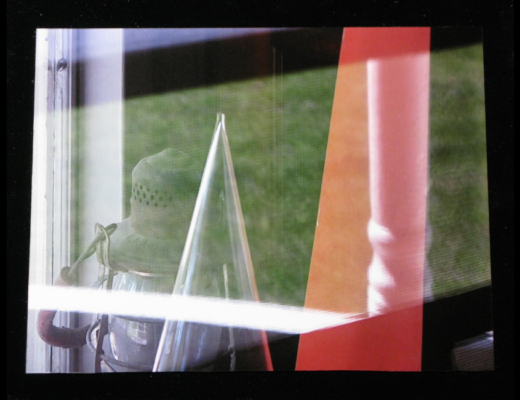Anna Roller’s directorial debut, Dead Girls Dancing, boasts a quite familiar plot, following three German high schoolers who embark on a road trip throughout Italy after their graduation. It’s an impulsive decision that, right off the bat, establishes a “girls just wanna have fun” narrative around the trio of Ira (Luna Jordan), Ka (Noemi Liv Nicolaisen), and Malin (Katharina Stark), and indulges certain tropes of the coming-of-age romantic summer. For the most part, Dead Girls Dancing tends, in the absence of a tight plot, toward capturing the free-wheeling breeziness of adolescence and intimacy among its ensemble characters, who are on an innocent quest to experience liberation from the constraints of modern society, its quotidian demands, and its usual boredoms. This sense of longing for self-realization is reinforced when the girls run into another free spirit, an enigmatic hitchhiker named Zoe (Sara Giannelli), who soon befriends and accompanies them for the rest of their adventure.
Through delicate, rhythmic editing and an expressive sound design, Anna Roller breaks away from the conventions of most road movies and rite-of-passage fare. In fact, Dead Girls Dancing exhibits a specific aestheticism — simultaneously of inexplicable mystery and oozing beauty — that situates it within a certain lineage of works including Peter Weir’s Picnic at Hanging Rock and Sofia Coppola’s The Virgin Suicides. Here, DP Felix Pflieger’s cinematography plays a crucial role in making a character of the Italian countryside’s great splendor, reveling in its vistas and landscapes (especially when the girls arrive at an abandoned remote village after a flat tire) and engendering the mildly cryptic eeriness that is constantly felt on screen. By embracing a formal mode built on peculiar camera angles, meticulous compositions, the use of natural light, and abstracted insert shots, Roller and Pflieger succeed in shaping a world that is concomitantly carnal and spiritual, animated and phantom-like. The camera heightens this unease, exerting a somewhat ghostly presence by either following the characters from behind or capturing them stealthily in the distance; a particularly memorable instance comes during an all-girls debauched evening, which in its aesthetic character recalls Chungking Express more than anything else.
Yet regardless of all its ambient beauty, Dead Girls Dancing falls a little short in its third act when it tries to distance itself from the established moodiness and pivot back to the “main” plot. From this point onward, the tension is relatively disjointed and things become slightly hastier and messier. Take, for instance, Ira’s series of hysterical and guilt-ridden reactions during this stretch: they doesn’t ring as convincingly as they should, and even if we can simply read her sudden tumult as a result of her newfound attraction for Zoe or the loss of her freedom, the way Roller executes this all is too loose. It’s obvious that the director endeavors to depict the irreconcilable and violent clash between youthful longing and lawful enforcement, a clash compounded by religious and psychoanalytic institutions which label all things juvenile as indecent and criminal — the film opens with the students during their graduation photoshoot, and later we will see them in mugshots — but the film’s denouement is too slapdash in its ambiguous metaphorical suggestions. Regardless, as we observe Ira in this final sequence, joyfully watching birds flit in the sky, it’s not too hard to look past Dead Girls Dancing’s failed landing and forward to Roller’s future as a promising and free-thinking filmmaker.
Published as part of InRO Weekly — Volume 1, Issue 23.5.
Enjoy our content? Want early access to features, interviews, and more? Support us on Patreon!







